Dog Training a Leash-Refusing Dog
How to effectively train a dog that refuses to walk on a leash. Mastering this skill is crucial for maintaining good dog etiquette and ensuring the well-being and safety of your beloved pet.
According to the Joint World Food and Agriculture Programme of the World Health Organisation, walking is highly recommended to prevent various types of cancers and heart disease.
Just because your furry friend doesn’t need to step on the scale doesn’t mean they can’t benefit from daily walks. It’s a simple and enjoyable way to keep them physically active and mentally stimulated.
Throughout this article, we will discuss:
- Understanding why your dog may be hesitant to walk on a leash
- Getting ready for leash training: A detailed guide to help you train a dog that refuses to walk on a leash
- Addressing common problems
- Expert advice for mastering leash training
- Discover the advantages of leash training
When you’ve finished reading this guide, you’ll be equipped with the know-how and equipment needed to get your dog to walk peacefully on a loose leash – even if they initially put up quite a fight.
As in any dog training situation, the key is patience and consistency.
Understanding Your Dog’s Reluctance to Walk on a Leash
Before you start leash training, understanding the reasons behind your dog’s resistance to walking on a leash is crucial.

Suppose the dog is not at ease with being connected to the leash. In that case, it is unrealistic to anticipate immediate compliance with the rules and the display of proper leash behavior.
Dealing with fear or anxiety
Introducing a leash to a fearful dog may not be advisable, mainly if it is their first time encountering one.
When confronted with an unfamiliar situation, fearful dogs may exhibit signs such as quivering, trembling, or attempting to escape.
Insufficient Socialisation
Ensuring that dogs are exposed to a wide range of experiences during socialization and throughout their lives is crucial to prevent them from developing uncertainty and fear.
An environmental enrichment program typically involves providing various environments, people, and animals with which the dog can safely and engagingly interact.
The goal is to ensure the dog is well-adjusted and comfortable in various situations. You can find more ideas for an environmental enrichment program by searching online.
Past Unpleasant Experiences
If a dog has had a negative experience while on a leash, such as being dragged or jerked, they may develop a negative association with the leash.
If you want to help your dog regain confidence after a negative experience, take a deep breath and focus on creating a positive connection between the leash and walking.
Insufficient leash training
If dogs haven’t been properly introduced to a leash or haven’t received consistent training on walking on a leash, they may feel confused when put on one.
They may struggle to comprehend what is expected of them and, in numerous instances, may resist the concept altogether.
Many dogs initially view being on a leash as a form of confinement and will try to break free.
They eagerly seek any enticing scent while strolling along the sidewalk, if possible.
Medical Issues
It’s normal for dogs sometimes to resist walking on a leash.
It is common for dogs to engage in occasional fights, particularly when they are still adjusting to wearing a collar and walking on a leash.
You’re not alone if your dog consistently and persistently resists walking on a leash. Your owners face this challenge.
Some dogs we’re familiar with have been described as not enjoying or disliking being walked on a leash.
There are instances where this behavior could be linked to underlying medical conditions such as joint pain, injuries, or illnesses that cause discomfort or even pain during walks for the dog.
Sometimes, it’s possible to identify the exact issue with your dog’s behavior and address it directly. However, there are instances when you can’t identify any specific cause for the inappropriate behavior and need to rely on general troubleshooting techniques.
Preparing for Leash Training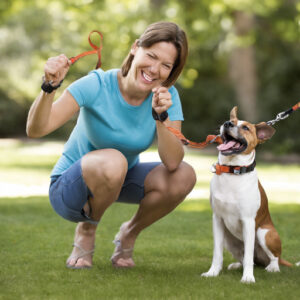
It is highly recommended that you ensure you have the right tools and set up a positive environment for leash training your dog.
Andalusian dogs may need some practice and patience when undertaking this new task. At first, they might tug on the dog’s leash enthusiastically as they eagerly explore their surroundings.
Using a gentle yet consistent approach, it is necessary to apply leash pressure to teach these dogs how to walk nicely on a leash.
Using outdated choke collars or any other devices that constrict a dog’s neck can cause unnecessary discomfort and harm.
These devices can be pretty uncomfortable and even dangerous for dogs. Tight collars, for example, can restrict airflow and cause heart irregularities. This is not what any pet owner wants, especially when engaging their furry friend in doggy aerobics!
Choosing the Right Collar and Leash
Choosing the right leash and collar is essential for practical leash training. There are a wide range of collars to choose from, including:
- Flat collars
- Martingale collars
- Head halters
- Harnesses
If your dog tends to lunge or pull during walks, you might want to consider using a head halter or an “easy walk” harness” instead “of the traditional collar and leash.
These types of collars serve two crucial purposes:
They are designed to address the issue of pulling on collars, which can be uncomfortable or harmful to dogs, especially those with sensitive skin behind their ears. Additionally, they teach dogs to walk without pulling on their human’s leash, all humans ‘sor smoother and more controlled movement.
Based on my professional experience as a dog trainer, I have found that traditional leashes 4-6 feet long can often be too short for comfort. This can result in dog walkers huddling uncomfortably close to their dogs to prevent the leash from wrapping around unsuspecting human torsos as they navigate their designated route.
Developing a Favourable Connection with the Leash
To assist your dog in forming a favorable connection with the leash:
- Encourage your dog to view the leash as a fun and exciting object, allowing them to play with and explore it.
- Ensure you reward your dog with small treats and praise whenever they demonstrate positive behavior while interacting with the leash.
Establishing a Reliable Routine
Consistency is crucial for teaching your dog to walk on a leash without pulling. Some dogs may understand the concept quickly, while others may need additional time and practice.
Organizing your “lessons” is crucial”l in leash training.
You can schedule training sessions for shorter durations, such as half an hour during your lunch break or immediately after work when you have some free time. It’s essential to avoid training your dog when you’re preoccupied or in a hurry, which can be unsafe and ineffective for both you and your furry friend.
It’s essential to navigate steps while holding onto a leash carefully, and a flag, as excitement, can sometimes lead to accidents.
Opting for a calm and peaceful setting with minimal distractions
Using positive reinforcement is essential for practical dog training. In this situation, the objective is to help your dog develop a positive association with the leash so that it willingly wants to wear it. However, this process requires patience and time.
Creating a controlled environment where distractions are minimized is essential to train your dog effectively. This can be done in your backyard or a quiet park. Doing so lets your dog concentrate on the lessons you are trying to teach, particularly regarding leash manners and walking correctly.
Step-by-Step Guide to Leash Training a Dog That Won’t Walk
You can start the training process once your dog is Won’t for leash training.
Follow these steps to help your hesitant dog become a confident walker on a leash.
Begin by focusing on indoor leash training.
Start leash training indoors in a low-distraction environment to help your dog feel at ease.
- Encourage your dog to walk alongside you by using their preferred treats and offering praise as positive reinforcement.
- Start with shorter distances and gradually increase the length of your indoor leashed walks as your dog gains more confidence.
Mastering Outdoor Leash Training
Once your dog has mastered walking on a leash indoors, it’s time to take your training to the next level and venture outdoors.
Select a calm and peaceful spot with few interruptions for your initial outdoor stroll.
Gradually introduce your dog to different environments, sights, and sounds as they gain more confidence while walking on a leash.
Dealing with Resistance
If your dog is hesitant to walk on the leash:
- Use enticing rewards, such as delicious treats or engaging toys, to motivate your dog to move in the direction you want.
- Employ a gentle approach with the leash, only applying slight pressure when needed.
- Refrain from using force or excessive pressure when training your dog, as this can lead to increased resistance and anxiety.
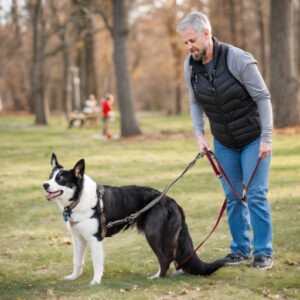 Increasing the Duration and Distance of Walks
Increasing the Duration and Distance of Walks
With consistent practice, the dog becomes more comfortable with the leash and develops trust in their handler.
As dogs spend more time walking on a leash and covering greater distances, they develop increased confidence and endurance, essential qualities for any pet.
Introducing Distractions
Gradually introduce distractions during your leash training sessions, such as:
- Other individuals
- Observing dogs from a safe distance
- Exploring unfamiliar things and encountering new sounds
For those with dogs who struggle with walking, visual leash training can be a valuable tool for teaching your dog to focus on you and the walking experience, even in the presence of distractions.
And who knows – your dog might surprise you by mastering the skill of dashing after all these years!
Always remember to acknowledge and appreciate your dog’s small achievements in their journey to becoming a better walker. It’s essential to avoid pushing them too hard or for too long during training sessions, which are already brief and enjoyable.
Troubleshooting Common Issues
It is possible to consistently resolve common problems during leash training for dogs that refuse to walk.
Here are a few possible concerns and their corresponding solutions:
Dog Pulls on the Leash
For dogs that tend to pull on the leash, a head halter or a front-attachment harness may be worth considering.
With the right tools and training, you can effortlessly regain your dog’s focus and prevent dog-pulling walks. This will create a calm and pleasant experience for you and your canine companion.
Dog Sits or Lies Down and Refuses to Move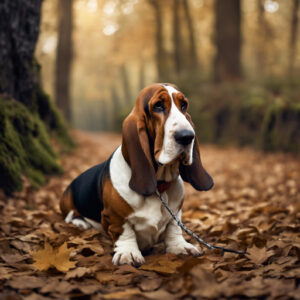
When your dog sits or lays down and refuses to move, using positive reinforcement with delicious treats is usually the most effective approach.
If that doesn’t work, you can try guiding them with the leash to encourage them to move in the opposite direction.
It’s important to avoid pulling or dragging your dog, as this can often make it more stubborn and resistant to moving.
Dog Is Easily Distracted
If your dog tends to become easily distracted, it receives high-value treats to maintain focus. During dog training sessions, using “shapes” or small food treats is customary to reinforce positive behavior and encourage focused walk-ins.
Using” these types of treats during training sessions is a practical choice, as the sight of food can quickly grab the attention of even the most easily distracted dogs.
Pet owners can effectively teach their dogs to stay focused and avoid constant distractions by utilizing positive reinforcement training techniques and carefully balancing rewards.
Dog Shows Fear or Anxiety
If your dog shows signs of fear or anxiety during leash training, use desensitization techniques and positive reinforcement to help them feel more comfortable.
Ensure that your dog is gradually introduced to the things that make them nervous, such as the leash, in a way that doesn’t cause excessive anxiety or distress. This means exposing them to low intensities where they don’t show any persistent signs of nervousness or upset.
Give them plenty of praise when they don’t remain calm during a mild stimulus. This will help them associate their calm and confident behavior with the situation that usually makes them nervous.
Tips for Successful Leash Training
To ensure success in leash training your dog:
- Practice patience and maintain consistency in your training endeavors.
- Use effective methods, such as rewards and enthusiastic encouragement, to foster positive behavior.
- Ensure your training sessions are brief and enjoyable to keep your dog interested and engaged.
- As your dog progresses, raising the bar during training sessions is essential.
- If you’re finding it difficult to make progress, it might be worth seeking guidance from experienced trainers.
Benefits of Leash Training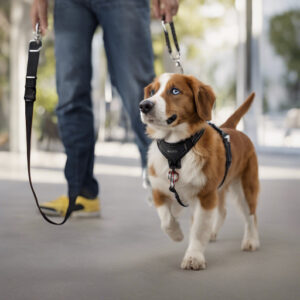
Successful leash training offers numerous benefits for both you and your dog, including:
- Enhanced safety: A dog trained to walk on a leash is less prone to running into traffic or causing other hazards.
- Enhanced control and effective communication: Leash training enables you to establish a firmer grip on your dog and plays a vital role in fostering clear communication between you and your furry companion.
- Building a strong bond and trust: Training sessions offer valuable opportunities to strengthen your connection with your beloved pet.
- Walking with a well-behaved dog on a loose leash can significantly enhance your walking experience.
Many dog owners experience the challenge of their dogs pulling on the leash and express frustration when their dogs constantly pull on the leash.
It can be particularly frustrating when people lack understanding of why their dogs engage in such behaviour and how to address it effectively.
When a dog pulls on the heel while walking, it typically indicates one of two things. Either the dog is not given enough space and time to walk at their own pace, or underlying behavioral issues may trigger the desire to run. These triggers include sights, sounds, smells (particularly those associated with other dogs), or emotions like fear or anxiety.
Final Thoughts
When faced with a dog that is resistant to walking on a leash, it may initially appear to be challenging.
With the proper approach to walking and the right techniques, you and your pet can transform from being forewarned to being forearmed, experiencing the incredible benefits that come with it.
It’s essential to maintain a calm and composed demeanor.
Consistency is crucial in this situation. During the initial few sessions of the walking school, it’s important not to have unrealistic expectations for your dog or yourself.
Gain insight into the reasons behind your dog’s reluctance to be walked on a leash – whether it’s fear of other dogs, unfamiliar surroundings, or simply exhaustion from excessive walksdog’se You have identified the issues and their uniting causes (which can sometimes be challenging to address), focus on making walks enjoyable for your dog, turning those moments into positive experiences for their overall well-being.
- Gain insight into your dog’s motivations for not wanting to walk on a leash.
- Prepare for training by selecting the appropriate collar and leash and ensuring a cheerful dog environment.
- Follow a systematic training plan that begins with indoor sessions and gradually transitions to outdoor walks.
- Address common problems by utilizing positive reinforcement and gentle guidance.
- Maintain patience and consistency in your training endeavors
If you’re struggling to make any headway with a stubborn dog, it may be time to consider enlisting the assistance of a skilled dog trainer.
They provide personalized guidance to help you overcome obstacles and motivate you to get back on track.
It’s important to remember that training your dog to walk calmly on a leash is crucial for his safety and overall happiness and for strengthening your bond with him.
So feel free to seek assistance—whether it’s to make progress or overcome obstacles—because you might feel a bit disheartened.
Enjoy your walk!
FAQs
How long does it take to train a dog that won’t walk?
The duration needed to train a dog to walk on a leash can vary depending on the dog’s age, temperament, and past experiences. Swon’togs may make noticeable improvements after just a few training sessions, while others may need several dogs or months of consistent training to see results.
What if my dog continues to refuse to walk on a leash?
If your dog continues to resist walking on a leash even after consistent training, seeking guidance from experienced dog trainers or a veterinary behaviourist can be beneficial. They have the expertise to evaluate your dog’s requirements and offer personalized advice to tackle any underlying concerns.
Can older dogs be leash-trained?
In reality, leash training older dog dogs require more time and patience than training a young puppy. It is crucial to be patient and adapt your training methods to suit your adult dog’s physical and cognitive capabilities.
What are the best treats for leash training?
Optimal treats for leash training should be small, soft, and irresistibly enticing to your furry companion. Some options for treats include small pieces of cooked chicken, cheese, or commercially available training treats. Select treats your dog loves and set them aside exclusively for training sessions.
How often should I practice leash training with my dog?
Strive to engage in leash training with your dog in brief sessions, preferably multiple times throughout the day. Ensure that your training sessions are conducted positively and engagingly, and always conclude each session on a positive note to keep your dog motivated and enthusiastic about learning.
The Post: How to Leash Train a Dog That Won’t Walk appeared first on Pet Grooming Tables.
The post Training a Dog That Refuses to Walk on a Leash appeared first on Ai Ninja Toolbox.
The Article Training a Dog That Refuses to Walk on a Leash Was Found On https://limitsofstrategy.com
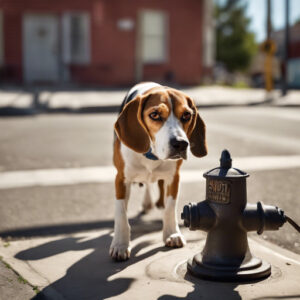
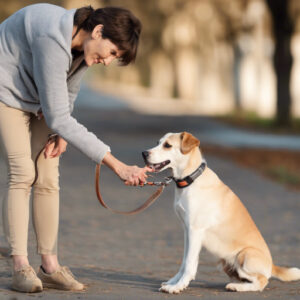


This article seems to scratch the surface of a complex issue many dog owners face. My own experience with leash reluctance has been quite revealing; it often goes beyond just behavioral resistance. For my dog, it was initially rooted in anxiety from past experiences—loud noises or other dogs overwhelming her during walks. It took time to build her confidence outside.
It’s interesting to hear about your experience with leash reluctance, and you’re raising a crucial point that many owners might encounter but often overlook. For some dogs, past negative experiences can shape their behavior in ways we might not initially recognize. It’s not just about the act of walking on a leash; it can be tied to a range of underlying emotions, from anxiety to fear.
It really is fascinating how much our dogs can carry from their past experiences. It makes me think about how we often overlook these emotional layers in our pets. Just like people, dogs can develop deep-seated feelings tied to specific situations or even places. I remember when I adopted my dog; he was incredibly hesitant with the leash at first. I found out that he had been rescued from a situation where he had to flee from danger, which made his fear a lot clearer.
It sounds like you’ve navigated quite a journey with your dog, and it’s fascinating how personal experiences like yours reveal the deeper layers behind behaviors like leash reluctance. It’s interesting to think about how our pets can mirror our own anxieties and fears. Just as you described your dog reacting to previous stressful encounters, I’ve known dogs that develop their own unique sensitivities based on their life experiences.
You bring up a compelling point about how our pets reflect our own mental states. The connection between a dog’s behavior and their owner’s feelings is often underestimated. It’s almost like these animals have a sixth sense for picking up on our stressors, which can create a bit of a feedback loop. When we’re anxious, our dogs can sense that unease, leading to their own anxiety.
You really hit the nail on the head with how our pets reflect our own feelings. It’s wild to see how closely dogs can mirror what we’re going through. I’ve seen my pup pick up on my mood, almost like a radar. When I was anxious about something, suddenly he was reluctant to step out, too.
I can really relate to what you’re saying about how our pets pick up on our emotions. It’s fascinating how intuitive they are. I’ve noticed similar behavior with my cat, actually. Whenever I’m feeling down or stressed, she seems to sense it and ends up curling up next to me more often. It’s almost like she knows I need a little extra comfort.
I completely get what you mean—our pets really do sense our emotions, just like when you’re trying to leash train and your pup picks up on your tension. Here’s a helpful piece I found that dives into how to effectively leash train a beagle, which could make those moments a bit smoother.
‘How to Leash Train Your Beagle’
https://lvabj.org/how-to-leash-train-your-beagle/.
You’ve really touched on something that so many pet owners experience, and it’s amazing how they can instinctively sense when we’re having a tough time. Your cat curling up next to you sounds like a sweet routine that brings you comfort. Animals have this incredible ability to know when we need that extra support, don’t they? It’s like they pick up on our energy without us even saying a word.
You’ve touched on such an important point about how our pets reflect our own emotional landscapes. It’s intriguing how a dog’s behavior can be shaped not just by their past experiences but also by the energy we bring into shared spaces. When we’re anxious, it often seeps into our interactions, subtly influencing how our dogs feel about situations like walks or meeting new people.
It’s great that you resonate with the idea of our pets reflecting our own anxieties and fears. That connection between us and our dogs is so profound and often overlooked. Just as they pick up on our emotions, their journeys give us incredible insights into how past experiences shape their behaviors.
You’ve touched on a key point that many owners might overlook when dealing with leash reluctance. It’s fascinating how past experiences shape our dogs’ behavior. Your dog’s anxiety due to loud noises or encounters with other dogs is something many can relate to.
You make a really good point about how our dogs’ past experiences can significantly influence their reactions, especially with something as routine as leash walking. It’s interesting to consider how the environment and their history play a role in shaping their perceptions. I’ve noticed with my own dog that certain triggers, like the sound of fireworks or even just the sight of a larger dog, can bring back anxiety they’ve experienced before.
It’s great to hear about your experience with leash reluctance. It really highlights how individual our dogs can be, shaped by their pasts. Anxiety stemming from specific experiences, like loud noises or encounters with other dogs, adds layers to their behavior that we might not immediately see.
You’ve captured an important aspect of dog behavior that often gets overlooked. Leash reluctance can be such a complex issue, and it really does speak to how uniquely shaped our dogs are by their experiences. I’ve noticed that it often takes time and patience to untangle those layers.
You’ve really hit the nail on the head with the complexity of leash reluctance. It’s fascinating how our dogs’ past experiences influence their behavior in ways we might not fully understand at first. I’ve had my share of moments where I thought it was just a simple issue, only to realize there was a whole history behind it.
It’s refreshing to hear your thoughts on leash reluctance and how those personal experiences reveal the deeper layers of our dogs’ behavior. It’s so easy to overlook the history that shapes them, especially when we’re wrapped up in the day-to-day hustle of pet ownership. Each dog comes with its own story, and sometimes, that history informs their reactions in subtle ways we might miss.
You raise a key point about leash reluctance and the intricate layers that can develop from a dog’s past experiences. It’s fascinating to think about how each dog carries this unique baggage, shaped by everything from training methods to socialization encounters.
It’s so true how each dog’s experiences shape their behavior, particularly when it comes to something as seemingly simple as leash walking. I’ve had my own moments with leash reluctance, especially with my rescue pup, who came from a rough background. I remember the first time I tried to take him out; he froze the moment I attached the leash. It really struck me how much trust is tied into those interactions—not just between dog and owner, but also in how dogs perceive the world around them.
You really hit the nail on the head with the idea of leash reluctance and how it can tie back to a dog’s history. It reminds me of how much our own experiences shape our reactions to different situations. I’ve worked with a few dogs who had similar pasts, and it’s always a journey to uncover what’s behind their hesitations.
I really appreciate you sharing your thoughts on leash reluctance. It’s fascinating how the past experiences of dogs can leave such lasting impressions. Each dog has its own story, and it’s like a puzzle to piece together what might be causing their discomfort. It’s great to hear you’ve worked with dogs in similar situations; it really shows how much patience and understanding is needed.
You’ve captured an important aspect of dog behavior that often gets overlooked. Leash reluctance can indeed be such a complex issue. It’s interesting how each dog comes with its own unique history and set of experiences that shape their behavior.
It’s interesting how understanding leash reluctance can lead to more effective training; this article really breaks down some practical methods that can make a difference.
‘Well-Behaved Puppy Training: Effective Methods’
https://lvabj.org/well-behaved-puppy-training-effective-methods/.
You’ve hit the nail on the head with leash reluctance being such a nuanced issue. Dogs really do come with their own backstories that play a huge role in how they react to the leash. It’s fascinating how something as simple as a walk can bring out a cocktail of emotions in them.
You’ve highlighted a fundamental truth about our canine companions that often gets brushed aside. Leash reluctance is indeed a layered issue, and it can reflect so much about each dog’s past experiences and individual personality. Each dog comes with a unique history, and that history often shapes their behavior in ways we might not initially recognize.
You bring up an important dimension of leash reluctance that’s often overlooked. Every dog we encounter has a story, and those narratives can shape their behavior in subtle and profound ways. When we think about leash reluctance, it’s easy to just chalk it up to a training issue or bad behavior. However, as you pointed out, understanding a dog’s past experiences can really change our perspective on why they might react a certain way.
Your insights on leash reluctance resonate with me. It’s interesting how dogs can carry past experiences that shape their current behavior. For my pup, the initial reluctance was tied to unfamiliar environments and the overwhelming stimuli that came with them. It took some creative strategies and a lot of patience to help him feel comfortable on walks.
I found some helpful tips that really align with what you mentioned about leash reluctance; it’s interesting how understanding a dog’s past can open new paths to training.
‘How to Leash Train Your Beagle’
https://lvabj.org/how-to-leash-train-your-beagle/.
It’s fascinating how a dog’s past experiences can really shape their present behavior, isn’t it? I’ve noticed something similar with my own pup. She was initially hesitant about walks, especially in new places. It took a combination of positive reinforcement and creating a familiar routine that helped her adjust. I used to think of leash training as just getting them to walk nicely beside us, but it’s so much deeper than that when you consider their comfort and emotional state.
It’s great to hear your thoughts on leash reluctance. It really is fascinating how our pups can hold onto their past experiences. The connection you made between unfamiliar environments and your dog’s initial reluctance is spot on. Lots of dogs feel overwhelmed by new sights and sounds, which can definitely affect how they respond to the leash.
I totally get where you’re coming from. It’s fascinating how our dogs carry those past experiences with them, isn’t it? For many pups, new environments can feel like an overwhelming whirlwind. The good news is that with some patience and creative strategies—like gradual exposure and positive reinforcement—things can really turn around.
It’s interesting how our dogs’ past experiences shape their behavior, right? Your story about leash reluctance highlights a common struggle that many owners face. It’s true that anxiety can be a big player in their reluctance, especially when they’ve had some tough encounters.
I completely agree that our dogs’ past experiences play such a crucial role in shaping their behavior. It’s fascinating how specific encounters, whether positive or negative, can linger in their minds and affect their actions down the road. In my own experience with my dog, I noticed that after a few bad meetings with other aggressive dogs, she became hesitant about going out for walks. It’s a reminder of how much we underestimate their emotional lives and how those feelings manifest in everyday situations, like leash reluctance.
You raise such a poignant point about the emotional intricacies of our dogs. It’s intriguing how their past experiences shape their present behaviors in ways we might not fully understand. I’ve seen similar patterns in my own dog. After a couple of tense encounters with larger dogs, he became increasingly anxious during our walks, often seeking to avoid any potential confrontation.
It’s interesting to hear about your experience with your dog. The way animals process their past encounters can be complex, and it’s a reminder of how sensitive they really are. Each experience shapes their view of the world, just like ours do.
It’s interesting how our dogs’ past experiences really leave a mark on their behavior. Your observations about your dog’s anxiety resonate deeply. Many owners face similar situations, watching their pups navigate the world with a bit of caution after a difficult encounter.
It’s fascinating to hear how your observations reflect the complex dynamics we often overlook when it comes to our dogs. Their emotional landscapes are as varied as our own, shaped by experiences that can leave lasting impressions. Your dog’s anxiety after those tense encounters is a powerful reminder of how past experiences can create a ripple effect in their behavior.
It really is fascinating how much our dogs’ past experiences influence their behavior. I’ve seen my own pup become hesitant after a few unexpected encounters, like a surprise scare from a larger dog while on a leash. It’s made me think about how they process those moments and how their memories of those events linger, even if we often wish they could just “move on.”
It really is fascinating how much our dogs’ past experiences influence their behavior. I can relate to your pup’s hesitance—my dog had a similar experience with a larger dog, and it took some time for him to feel comfortable around others again. It’s interesting to think about how dogs process those moments and how their memories linger.
It’s so relatable to see how a past experience can stick with our dogs, isn’t it? Your dog’s journey back to comfort sounds like it must have taken a lot of patience and care. I’ve noticed that every little interaction can reshape how they see the world around them. It’s really remarkable to think about the layers of that memory—how they navigate their environment based on what they’ve been through.
It really is fascinating how much a dog’s past can influence their behavior. I’ve noticed that even subtle experiences, like a loud noise during a walk or a negative encounter with another dog, can stick with them for a long time. My own dog, Luna, had a rough first year before we adopted her, and her leash reluctance has been something we’ve had to work on slowly.
I found this article really insightful, especially in how it emphasizes understanding our pets’ instincts and backgrounds to better manage their natural behaviors.
‘Effectively Minimize Your Cat’s Hunting Impact’
https://lvabj.org/effectively-minimize-your-cats-hunting-impact/.
Your experience really highlights how nuanced leash reluctance can be. It’s interesting how our dogs can carry the weight of past experiences, sometimes in ways we don’t immediately recognize. I’ve also seen similar patterns with my own dog, who had a tough time adjusting to walks after a particularly stressful encounter with a group of rowdy dogs.
This is such an important topic! I remember when I first adopted my dog, she was completely resistant to walking on a leash. It felt frustrating at times, but as I dove deeper into leash training techniques, I discovered that patience and understanding were key. It was fascinating to learn about the reasons behind her hesitance—fear of the unknown or past experiences can really shape a dog’s behavior.
It’s interesting how our pets’ behaviors can reflect so much about their past experiences and feelings. When I first started working with my dog on leash training, I encountered similar challenges. It took a lot of trial and error, but I quickly learned that consistent, positive reinforcement made a world of difference.
It really is fascinating how those early experiences shape our pets’ behaviors and reactions. I’ve noticed similar patterns with my dog. When I first adopted him, he had some quirks that hinted at a rough start, like being skittish around loud noises or hesitant to approach new people. It took time and a lot of patience, but understanding where those behaviors came from helped me tailor our training to his needs.
It sounds like you’ve really connected with your dog on a deeper level. Those quirks you mentioned can be heart-wrenching but also show the resilience that so many pets have. It’s quite eye-opening how their past experiences can shape their reactions to the world around them.
It’s really fascinating how our pets carry their past experiences with them, isn’t it? I’ve noticed with my own dog that certain noises or situations can trigger reactions that sometimes seem a bit out of nowhere. It makes me think about how much emotional intelligence animals possess, even if they can’t verbalize their feelings.
You know, it’s pretty wild how these little furballs come with their own backstories, making them quirky little enigmas. Your observation about your dog’s skittishness around loud noises sounds all too familiar. It’s like they have this secret handbook of behaviors that they bring along from their previous lives, which sometimes feels a bit like trying to read hieroglyphics, doesn’t it?
You bring up a significant point about how pets’ behaviors often serve as reflections of their experiences. It’s not just about the physical actions they take, but also about the emotions and histories that drive those actions. When you mention the challenges of leash training, it’s clear that this isn’t just a skill set we’re teaching our pets—it’s a whole conversation around trust, communication, and understanding their past.
It’s fascinating how much our pets’ behaviors can illuminate their past experiences. Leash training can be particularly revealing, can’t it? I remember starting the process with my own dog; there were days when I felt like we were speaking completely different languages. Positive reinforcement really does make a difference. It’s not just about teaching them commands; it’s about building trust and understanding between the two of you.
You’ve hit on a real key in understanding our pets—their behaviors are often deeply intertwined with their past experiences and emotions. It’s fascinating how much they communicate through their actions, even when they can’t verbalize their feelings. Your experience with leash training strikes a chord, and it’s something many dog owners can relate to.
I really appreciate how you’ve addressed a common issue that many dog owners experience—leash refusal. It’s something I personally faced with my pup when we first started training. She was so excited to explore the world around her that the idea of being held back by a leash seemed unbearable to her! I learned pretty quickly that the key was patience and understanding her perspective.
It’s such a relatable experience, isn’t it? I think a lot of dog owners face that moment when their pup suddenly sees the world as a playground and the leash feels more like a shackle. It’s interesting how understanding their perspective really shifts the training dynamic. I remember when I was training my dog, it took me a while to realize that the leash could actually serve as a tool for exploring together rather than a barrier.
It’s interesting how leash refusal can really highlight a dog’s personality, isn’t it? My dog was the same way—her excitement was palpable, and it felt like she was trying to pull me into every adventure. I found that when I shifted my approach to focus more on building a positive association with the leash rather than strictly enforcing it, things began to improve. It was more about rewarding her for staying close rather than just correcting the unwanted behavior.
It’s really interesting how those early leash experiences reveal so much about our dogs, isn’t it? I’ve noticed with my own pup that the leash tends to become this focal point for anxiety or excitement, depending on the day. Sometimes it feels like they’re more aware of the world than we are, just itching to explore every inch of it.
I totally get what you mean about leash refusal revealing a dog’s true nature; I found this article really helpful in learning how to better engage my beagle during walks.
‘How to Leash Train Your Beagle’
https://lvabj.org/how-to-leash-train-your-beagle/.
It’s so true how those early leash experiences can reveal the layers of a dog’s personality. Every pup is just a bundle of instincts and curiosity, and the leash can really amplify those traits. I’ve seen similar patterns with my own dog. Some days, she’s ready to race ahead, all tail wags and energy, while other days, she’ll pull back like she’s unsure of the world around her. It can be pretty enlightening to see how their mood affects their behavior.
You’re spot on about how leash refusal can reveal so much about a dog’s personality. I had a similar experience with my dog, too. At first, it felt like a battle of wills every time we headed out. But when I started thinking about it from her perspective, everything changed. Shifting to that rewards-based approach helped me understand her desire for exploration and excitement. It’s almost like she was saying, “I want to discover the world with you!”
It’s interesting how much a simple shift in perspective can illuminate not just our dogs’ desires, but also their personalities. I’ve had a similar revelation with my own pup. In the early days, I was somewhat rigid in my approach, focusing on getting from point A to point B rather than tuning into what she was experiencing. Once I embraced the idea that walks were as much about her adventures as they were about exercise, it really transformed our outings.
It’s so true how our perspective can change everything about our experiences with our dogs. I had a similar journey with my own pup. At first, I was just focused on the routine of our walks—getting to the same spots, sticking to the planned route. It felt efficient but not very rewarding. It wasn’t until I started to notice the joy in her little discoveries that things shifted for me.
I’ve found that shifting our perspective on our pets’ behaviors can lead to deeper connections, much like how understanding our dogs can enrich our walks – it’s fascinating to see how this idea applies to our cats as well, especially when it comes to managing their hunting instincts.
‘Effectively Minimize Your Cat’s Hunting Impact’
https://lvabj.org/effectively-minimize-your-cats-hunting-impact/.
It’s great to hear how you navigated your own challenges with leash refusal. What you mentioned about it feeling like a battle of wills really hits home. Many dog owners face that frustration, and it can be a tough realization when you recognize that it’s not just about getting from point A to B. It’s about the dog’s experience and perspective.
You make a great point about how leash refusal can really bring out a dog’s personality. Your experience of shifting focus to positive reinforcement is so valuable. It’s interesting how dogs often thrive when we encourage their adventurous spirits rather than simply trying to curb them.
It’s great to hear you’re resonating with this topic. Leash refusal can really test your patience as a dog owner, can’t it? I remember when I was training my own dog; she was a total free spirit, too. It’s fascinating how their natural curiosity can conflict with our desire to keep them safe and controlled.
I totally get that struggle with leash refusal; I found some great tips recently that really helped me understand how to tackle it with my beagle, and they might be useful for you too.
‘How to Leash Train Your Beagle’
https://lvabj.org/how-to-leash-train-your-beagle/.
It’s true, leash refusal can be a real test of patience. Each dog has their own personality, and it sounds like your beagle’s curiosity led to some interesting training moments. Balancing their innate need to explore with our intentions to keep them safe can feel like a tug-of-war at times.
It sounds like you really tuned into your pup’s needs during the training process. Leash refusal can be so frustrating, especially when you see how eager they are to explore. I think it’s really valuable to take a step back and remember that their excitement comes from a natural curiosity about the world.
I totally relate to your experience with leash refusal; it’s such a common hurdle, and I recently came across some effective training methods that might help others facing the same challenge.
‘Well-Behaved Puppy Training: Effective Methods’
https://lvabj.org/well-behaved-puppy-training-effective-methods/.
You really hit the nail on the head with the whole curiosity thing. It’s so easy to forget that our pups see the world in a completely different way. That excitement they have for everything around them can definitely make leash training a bit of a rollercoaster ride.
I really appreciate your thoughts on tuning into our pups during training. It’s so true that their enthusiasm often stems from a deep-seated curiosity. Sometimes, it feels like their little brains are just buzzing with all the smells and sights around them, and who can blame them for wanting to dive headfirst into everything?
I really appreciate the perspective you’ve shared on leash training! It resonates with my own experience with my stubborn beagle, Charlie. At first, he was practically glued to the ground whenever I clipped on his leash. I found it so frustrating, not just for the walks we missed out on, but for the mental and physical stimulation he clearly needed.
It sounds like you’ve really been through the wringer with Charlie. Beagles can be particularly strong-willed, and it’s no surprise that he might have had differing opinions about leash time. It’s not uncommon for dogs to feel a bit uncertain or even resistant when it comes to wearing a leash at first. They rely heavily on their instincts, and suddenly being attached to a human can feel like a big shift in their world.
I really appreciate how you’ve broken down the challenges of leash training. It’s true that many dog owners face this hurdle, and understanding why our dogs might resist is so important. In my experience, I’ve found that patience and consistent positive reinforcement make a huge difference. My dog, Bailey, refused to walk on a leash for the longest time, and I realized it was partly due to her anxiety around busy environments.
It sounds like you’ve had quite the journey with Bailey, and I appreciate you sharing that experience. Leash training can be such a nuanced process, especially when it involves a dog that may be feeling anxious in their surroundings. That understanding you gained about her reaction speaks volumes about your bond with her.
It’s interesting to hear about your experience with Bailey and how anxiety played a role in her leash challenges. I think that’s something many dog owners can relate to; our pets often mirror our own emotions, and busy environments can be overwhelming for them.
It’s true—our pets really do have a way of reflecting our own emotions. I’ve noticed that when I’m feeling anxious or overwhelmed, my dog can pick up on that energy and often becomes more restless or alert. It’s fascinating how sensitive they are to our moods.
Speaking of our pets’ behaviors and their environments, I recently came across some helpful insights on managing the impact of our cats’ natural instincts that I thought might resonate with you.
‘Effectively Minimize Your Cat’s Hunting Impact’
https://lvabj.org/effectively-minimize-your-cats-hunting-impact/.
You’ve really captured something essential about our bond with pets. Their ability to pick up on our feelings can be both incredible and a bit uncanny. It’s like they have this sixth sense that lets them know when we’re not ourselves. I notice the same with my cat—she’ll become more close-knit when I’m feeling off, often curling up next to me.